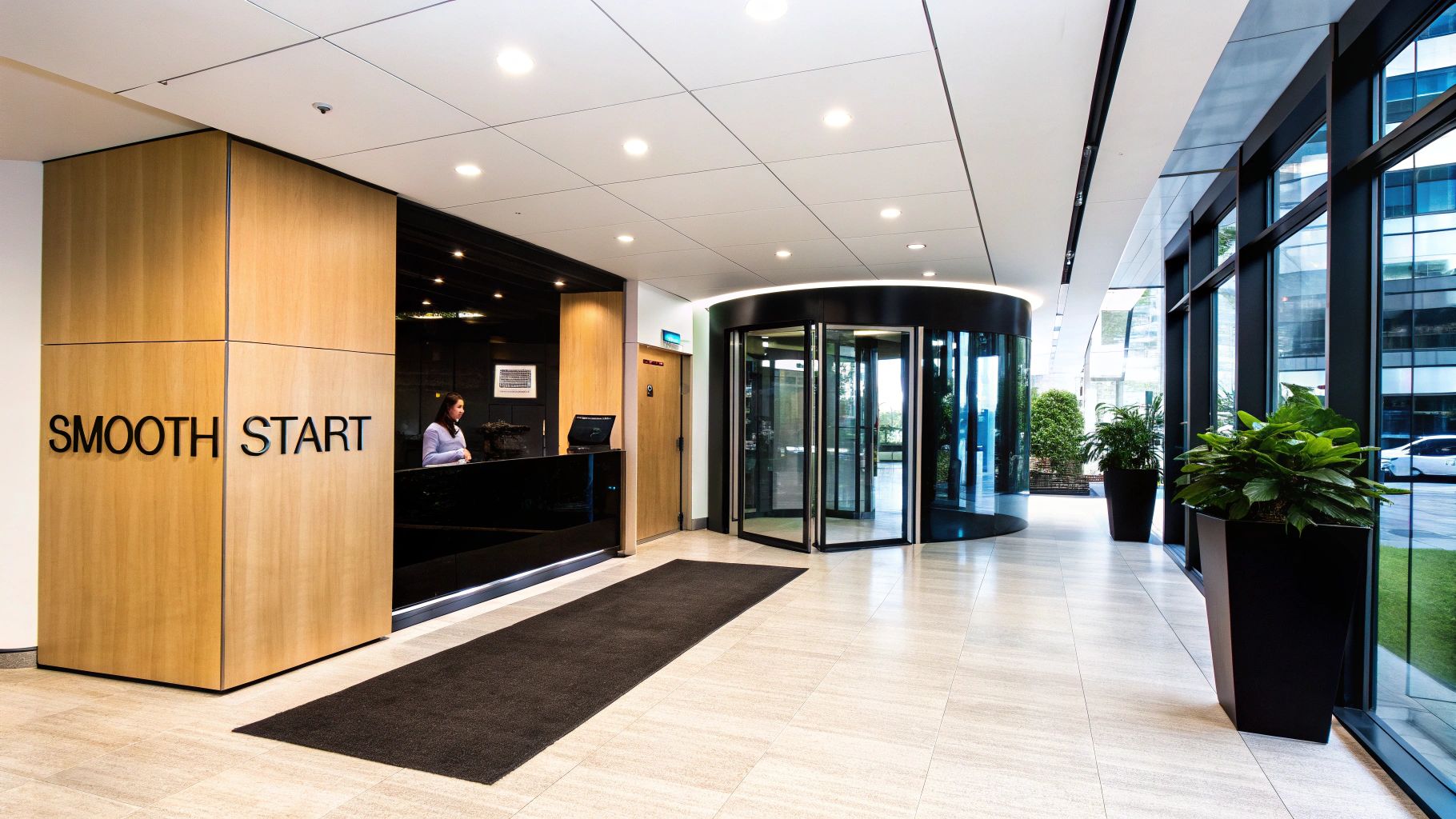The Real Cost of Today's Employee Exodus
The modern workplace faces a significant challenge: employee retention. It’s no longer enough to simply fill open positions. Organizations must cultivate environments where talented individuals want to stay and thrive. Ignoring this reality carries a hefty price tag, impacting far more than just the bottom line.
The Financial Burden of Turnover
The most obvious cost of high employee turnover is financial. Recruiting, onboarding, and training new hires requires a significant investment. Lost productivity during the transition period further compounds these expenses.
While the exact figures vary, replacing an employee can cost anywhere from 50% to 250% of their annual salary. This financial burden can quickly erode profitability and hinder growth.
The Hidden Costs: Beyond the Balance Sheet
The true cost of employee exodus extends far beyond readily quantifiable expenses. The loss of institutional knowledge, disrupted team dynamics, and diminished morale can have a cascading effect throughout the organization.
When experienced employees leave, they take with them valuable insights and expertise, impacting innovation and overall efficiency. This knowledge drain can stall projects, hamper customer relationships, and limit an organization’s ability to adapt to evolving market conditions.
Furthermore, constant turnover breeds instability and uncertainty, impacting team cohesion and productivity. New team members require time to integrate and build rapport, leading to decreased efficiency and the potential for conflict.
This volatile environment negatively impacts employee morale and engagement, creating a vicious cycle that perpetuates further turnover.
The Impact of Disengagement
To increase employee retention, focusing on employee engagement is crucial, especially considering current turnover rates. A significant challenge is the high percentage of employees either ‘quiet quitting’ or actively considering leaving their jobs.
- 59% of employees globally are engaging in ‘quiet quitting.’
- 75% are considering departure due to disengagement.
This highlights the need for companies to implement strategies that enhance engagement and job satisfaction. Explore this topic further
Recognizing the Warning Signs
Identifying the warning signs of a retention problem is critical. These can include:
- Decreased productivity
- Increased absenteeism
- Negative employee feedback
- A decline in customer satisfaction
Addressing these issues proactively can help organizations mitigate the damaging effects of high employee turnover. Low retention rates often indicate underlying issues such as:
- Poor leadership
- Inadequate compensation and benefits
- Lack of growth opportunities
Ignoring these warning signs can lead to a downward spiral of disengagement and attrition, ultimately impacting the long-term health and success of the organization. Addressing these challenges requires a strategic approach, focused on creating a workplace where employees feel valued, supported, and empowered to contribute their best work.
Beyond the Paycheck: Compensation That Actually Works

While competitive salaries are essential for attracting top talent, they're not the sole ingredient for keeping employees engaged and committed for the long haul. True retention comes from crafting a compensation strategy that speaks to the heart of what employees value. Think of salary as the solid foundation of a house. It's essential, but it's the walls, roof, and all the finishing touches – the benefits, perks, and growth opportunities – that transform it into a welcoming home where people truly want to stay.
Rethinking Compensation: It's More Than Just a Number
Today's employees crave more than just a hefty paycheck. They seek a compensation package that aligns with their personal values and enhances their overall well-being. This shift in perspective calls for a more holistic approach.
For example, flexible work arrangements, chances for professional development, and robust health benefits can hold just as much weight as a higher salary for many individuals. These added perks showcase a company's commitment to its employees' lives beyond the office.
Personalized Benefits Packages: Moving Beyond the One-Size-Fits-All
The era of generic, one-size-fits-all benefits packages is fading. Employees are diverse, with unique needs and priorities. Offering personalized benefits empowers them to select options that truly resonate with their individual circumstances and life stage.
This might include childcare support, elder care assistance, student loan repayment programs, or the flexibility of additional paid time off. Such tailored benefits demonstrate a company's genuine care for its employees' diverse needs, fostering a stronger sense of loyalty and belonging.
Compensation Reviews and Transparency: Fostering Trust and Fairness
Regular and transparent compensation reviews are the bedrock of trust and pay equity within an organization. Transparency, however, doesn't necessitate revealing every salary. It's about clearly communicating the process behind compensation decisions, the criteria for evaluations, and the factors influencing salary increases.
This open communication fosters a sense of fairness and dispels anxieties about potential inequities. Building this trust is paramount for creating a positive and supportive work environment where employees feel valued and respected.
To further enhance retention strategies, it's crucial to consider demographics and current job market trends. Recent data reveals notable shifts in employee retention across different demographic groups, underscoring the need for targeted approaches. The current job market, brimming with opportunities, empowers employees to explore new roles. Therefore, competitive compensation and a positive work environment are essential to attract and retain top talent. Find more detailed statistics here.
To illustrate the variations in retention risk across different demographics, let's take a look at the following table:
Retention Risk by Demographic Group
Comparison of retention risk scores and changes across different demographic segments
| Demographic Group | Retention Score Change | Retention Risk Level | Key Motivating Factors |
|---|---|---|---|
| Entry-Level (18-25) | +15% | Medium | Career development, mentorship, work-life balance |
| Mid-Career (26-40) | +5% | Low | Competitive salary, benefits, job security |
| Senior-Level (41-55) | -10% | High | Leadership opportunities, recognition, flexible work arrangements |
| Executive (55+) | -5% | Medium | Retirement planning, succession planning, legacy creation |
This table highlights the diverse factors influencing retention across different age groups. While entry-level employees prioritize career growth and work-life balance, senior-level employees seek leadership roles and recognition. Understanding these nuances is crucial for tailoring effective retention strategies.
Communicating Total Value: Painting the Full Picture
Many employees underestimate the full value of their compensation package, often overlooking the numerous benefits and perks beyond their base salary. It's essential to clearly communicate the complete scope of their rewards, showcasing all the opportunities available to them.
One effective strategy is creating a "total rewards statement." This document outlines the monetary value of all benefits, including health insurance, retirement contributions, and paid time off. By providing a comprehensive overview, employees gain a deeper appreciation for the true extent of their compensation, which can significantly influence their decision to remain with the organization.
Creating Flexibility That Serves Everyone

The modern workplace has evolved dramatically. Flexibility isn't just a nice-to-have; it's a necessity for attracting and retaining top talent. But simply offering remote work isn't enough. True flexibility requires a strategic approach that benefits both employees and the organization as a whole.
Mastering the Hybrid Model: A Balancing Act
Successfully navigating hybrid work models requires careful planning and execution. It's about creating an inclusive environment where everyone feels valued and connected, regardless of their location. This means rethinking traditional workplace practices and finding innovative ways to foster collaboration and communication.
For example, companies can implement flexible scheduling, allowing employees to choose their work hours to better suit their individual needs. This might involve designated core collaborative hours when everyone is online and available, combined with the autonomy for focused individual work during other times.
Reimagining Collaboration and Productivity
Flexible work necessitates a fresh perspective on productivity. Traditional methods, like tracking hours in the office, are outdated. Focusing on outcomes and the quality of work is key. This requires managers to adapt their leadership styles, build trust, and empower their teams.
Collaboration in a hybrid environment also demands intentional effort. Companies can implement new communication tools like Slack, utilize project management software like Asana, or establish regular virtual check-ins to maintain team cohesion.
Leading Across Distances: Equipping Managers for Success
Managers are critical to the success of flexible work arrangements. They need training and support to navigate the unique challenges of leading distributed teams. This includes fostering communication, building trust remotely, and managing performance across different work environments.
For instance, managers can implement regular one-on-one meetings, both in-person and virtually, to provide personalized support and guidance. They also need the skills to address potential equity issues between remote and in-office staff.
Boundaries, Expectations, and Intentional Connection
Clear boundaries and expectations are fundamental for flexible work to thrive. This includes establishing guidelines for communication, availability, and work-life balance. Open and honest communication is paramount.
Creating opportunities for connection outside of formal work is also crucial. These intentional connection points might include virtual team-building activities, informal online social events, or periodic in-person gatherings. This helps maintain a strong company culture, even when employees are geographically dispersed. This is especially important given evolving employee expectations and rising global turnover rates. Globally, the shift towards remote and hybrid work has significantly impacted employee retention strategies. As of 2024, the global turnover rate rose to approximately 20%, up from 18% in 2023. Flexibility is a key factor, with 52% of employees preferring hybrid work arrangements. Furthermore, 80% of employees consider mental health support important when deciding whether to stay with an employer. Read the full research here. Successfully implementing flexible work involves a multi-faceted approach that considers individual employee needs while supporting organizational objectives.
Building Growth Pathways That Keep Top Talent
Career stagnation is a major driver of employee turnover. Just like a plant needing a larger pot to truly flourish, employees crave opportunities to grow, learn, and advance in their careers. Organizations that recognize this intrinsic need are reimagining professional development, moving beyond traditional hierarchical structures and embracing a more dynamic approach.
Personalized Development Plans: Nurturing Individual Potential
Forget the one-size-fits-all approach. Leading companies are now crafting personalized development plans that align individual aspirations with the organization's goals. This creates a powerful synergy, benefiting both the employee and the company. Think of it like a tailored suit, perfectly fitted to the wearer. Similarly, a personalized development plan caters to the unique needs and ambitions of each employee, allowing them to unlock their full potential and contribute meaningfully to the organization.
These plans might include:
- Skill-Based Training: Access to relevant courses, workshops, or online learning platforms like Udemy empowers employees to acquire in-demand skills.
- Mentorship Programs: Connecting employees with experienced mentors provides guidance, support, and valuable insights for career progression.
- Stretch Assignments: Challenging projects push employees beyond their comfort zone, encouraging them to learn new skills and broaden their experience.
Beyond the Ladder: Exploring Diverse Growth Opportunities
The traditional career ladder can feel restrictive. Modern organizations are embracing alternative growth pathways:
- Cross-Functional Projects: Working on projects outside their department exposes employees to different areas of the business, allowing them to expand their network and diversify their skills. This can spark new interests and uncover hidden talents.
- Skill-Based Advancement: Recognizing and rewarding employees based on their skills and expertise, rather than solely on their job title, encourages a culture of continuous learning. This approach empowers individuals to progress based on their mastery of specific competencies.
- Lateral Moves: Encouraging lateral moves allows employees to broaden their experience and find the perfect fit within the organization. This acknowledges that growth isn't always vertical; sometimes, a lateral move can open doors to exciting new challenges and opportunities.
Investing in Development: Reaping Retention Rewards
Investing in employee development isn't just an expense—it's a strategic investment in the future of your organization. Companies that prioritize employee growth reap numerous rewards:
- Increased Engagement: When employees feel valued and supported in their development, their engagement soars. They're more invested in their work and committed to the company's success.
- Higher Retention Rates: Employees who see opportunities for advancement within the company are far less likely to seek those opportunities elsewhere.
- Improved Performance: As employees hone their skills, their performance naturally improves. This contributes to increased productivity, innovation, and overall business success.
Accessibility is Key: Empowering Every Employee
Learning and development opportunities should be accessible to all employees, regardless of their role or seniority. This can be achieved through a variety of approaches:
- Online Learning Platforms: Providing access to online resources offers a flexible and cost-effective way for employees to learn at their own pace.
- Internal Training Programs: In-house workshops and seminars led by experienced professionals can offer targeted training and development.
- Tuition Reimbursement: Supporting employees who wish to pursue further education demonstrates a commitment to their long-term growth and development.
By fostering a culture of continuous learning and development, organizations can empower employees to reach their full potential. This creates a ripple effect, boosting retention rates, driving business success, and creating a more engaged and fulfilled workforce. This investment in your employees' futures is particularly crucial in today's competitive job market.
Cultivating a Culture People Won't Want to Leave

Culture isn't just a buzzword. It's the very heart of any organization, the unseen force shaping employee experiences and profoundly influencing employee retention. A flourishing culture nurtures a sense of belonging, making employees feel valued and connected, not just to their tasks, but to one another.
Building a Workplace of Belonging and Connection
Creating a culture where employees truly belong requires dedication. It's about fostering an environment of open communication, respect, and trust. This involves actively listening to feedback, valuing individual contributions, and facilitating opportunities for genuine connection. Imagine building a strong community where everyone feels seen, heard, and appreciated.
Team-building activities, both within and across departments, can strengthen bonds and build camaraderie. These could range from informal coffee breaks to organized volunteer work. The goal is to create chances for employees to connect personally, fostering a stronger sense of community within the workplace.
Psychological Safety and Addressing Toxic Behaviors
Psychological safety – the freedom to speak openly without fear of repercussions – is paramount. Employees need to feel comfortable sharing their ideas, concerns, and feedback without fearing negative consequences. Leaders must actively model vulnerability, encourage open dialogue, and address harmful behaviors promptly. Ignoring negativity allows it to spread, damaging trust and eroding workplace culture.
Clear reporting channels for inappropriate conduct, coupled with fair and impartial investigations, are also vital for a safe and respectful workplace. This shows a commitment to employee well-being and reinforces a culture of accountability.
Leadership Practices That Support Retention
Leadership plays a vital role in shaping company culture and, ultimately, employee retention. Strong leaders inspire and motivate, creating a positive and supportive atmosphere. This means providing regular feedback, both positive and constructive, acknowledging achievements, and offering growth and development opportunities. Leaders who invest in their people invest in the organization’s future.
Mentorship programs, where seasoned employees guide newer team members, can greatly enhance employee development and belonging. This creates a positive feedback loop, with mentors feeling valued for their experience and mentees gaining valuable guidance.
To understand the various factors influencing retention, let's look at the following table:
Employee Retention Factors by Importance
| Retention Factor | Importance Rating | Implementation Difficulty | ROI Potential |
|---|---|---|---|
| Competitive Compensation | High | Medium | High |
| Opportunities for Growth & Development | High | Medium | High |
| Positive Work Environment | High | Medium-High | High |
| Recognition & Appreciation | High | Low | High |
| Work-Life Balance | Medium-High | Medium | Medium-High |
| Benefits Package | Medium | Medium | Medium |
| Effective Leadership | High | Medium-High | High |
| Clear Communication | High | Low | High |
| Job Security | Medium-High | High | Medium |
| DEI Initiatives | Medium | Medium-High | High |
This table highlights the key factors impacting an employee's decision to stay with a company, ranging from compensation and benefits to leadership and company culture. As you can see, factors like opportunities for growth, a positive work environment, and effective leadership are highly important and offer significant ROI potential.
DEI Initiatives and Feedback Systems
Diversity, Equity, and Inclusion (DEI) initiatives are now a necessity for a truly inclusive workplace. Successful companies weave DEI into their retention strategies through diverse hiring practices, equitable advancement opportunities, and a culture of belonging for all. This means moving beyond superficial actions and embedding DEI principles into the organization’s DNA.
Robust feedback systems are also crucial for continuous improvement. Regular employee surveys, pulse checks, and stay interviews provide valuable insights into employee experiences and pinpoint areas for improvement. This data-driven approach enables informed decisions and helps build a workplace where employees genuinely want to stay. This constant feedback loop helps organizations adapt to evolving needs and create a workplace that fosters long-term loyalty. This approach can be far more effective than focusing solely on monetary incentives, especially given the varied priorities of today's workforce.
Prioritizing Well-Being That Goes Beyond Lip Service
Today, offering superficial perks like ping-pong tables and free snacks simply isn't enough. Truly effective wellness programs must go deeper. They need to address the root causes of employee stress and burnout to really make a difference in employee retention. This calls for a shift in how we see well-being – not as a trendy extra, but as a core part of any sound business strategy.
From Perks to Purpose: Reframing Wellness Initiatives
Think of your employees' well-being as a garden. Scattering a few seeds (perks) won't create a flourishing landscape. You need rich soil (a supportive work environment), regular watering (consistent managerial attention), and plenty of sunlight (resources and strong leadership support) for anything to truly grow. This means moving beyond surface-level offerings and designing programs that nurture the whole person.
This includes offering resources and programs that address the full spectrum of well-being:
- Physical: This could include gym memberships, healthy food options in the office, and ergonomic workstations.
- Mental: Think access to counseling services, stress management programs, and readily available mindfulness resources.
- Financial: Financial literacy workshops, retirement planning assistance, and robust employee assistance programs can make a huge difference.
- Social: Team-building activities, social events, and creating opportunities for meaningful connection within the workplace are also crucial.
Preventing Burnout: Addressing the Root Causes
Burnout – a debilitating state of emotional, physical, and mental exhaustion – is a major factor in employee turnover. Addressing it proactively is essential for retaining your valuable team members. This requires a multifaceted approach:
- Workload Management: Ensure workloads are reasonable and manageable to prevent employees from feeling constantly overwhelmed. This might involve revisiting job descriptions, redistributing tasks, or bringing in additional support where needed.
- Boundary Reinforcement: Encourage employees to disconnect after work hours. Respecting their personal time fosters a healthy work-life integration. Consider implementing policies around after-hours communication and actively encourage the use of vacation time.
- Intentional Recovery Periods: Promote the importance of taking breaks throughout the day and using vacation time to recharge and prevent burnout. This could include encouraging short breaks, offering wellness days, or promoting longer vacations.
Leading by Example: The Role of Leadership
Leaders play a crucial role in shaping a culture of well-being. They need to model healthy work habits themselves. This means prioritizing their own well-being, setting clear boundaries, and encouraging their teams to do the same. This top-down approach shows everyone that well-being is a true priority at every level of the organization.
For example, leaders can openly share their own strategies for managing stress, encourage team members to take breaks, and make it clear that using vacation time is important. This cultivates an environment where well-being is valued, practiced, and not just an empty promise.
Measuring Impact and Calculating ROI
Just like any other business initiative, wellness programs need to be measured to determine their effectiveness. Track key metrics, such as employee participation in programs, employee satisfaction with the offerings, and, importantly, the impact on retention rates.
By analyzing this data, organizations can pinpoint successful programs, identify areas for improvement, and clearly demonstrate the return on investment (ROI) of their well-being initiatives. This data-driven approach allows for continual improvement and reinforces the vital role of well-being in a thriving, successful business. This strategic approach transforms well-being from a nice-to-have perk into a vital part of a successful employee retention strategy.
Measuring What Matters: Data-Driven Retention

You can't fix what you don't measure. Understanding how to increase employee retention starts with tracking the right metrics. This means going beyond simple turnover rates and delving into the factors that influence why employees stay or leave. By embracing a data-driven approach, you can pinpoint areas for improvement and gauge the success of your retention strategies.
Identifying Key Retention Indicators
Not all metrics are the same. Some are leading indicators, offering predictive insights into future turnover. Others are lagging indicators, reflecting past trends. Using the right mix is essential.
Employee engagement surveys, for example, are invaluable for understanding employee sentiment. They can help you identify potential issues before they lead to someone leaving.
Other important indicators include:
- Employee Net Promoter Score (eNPS): This measures how likely employees are to recommend your company as a great place to work.
- Voluntary Turnover Rate: This tracks how many employees choose to leave, which can uncover underlying organizational concerns.
- Average Employee Tenure: This offers a glimpse into the long-term success of your retention efforts.
- Performance Review Scores: Consistently low scores could signal a need for more growth opportunities or better management.
The Power of Stay Interviews
Exit interviews can tell you why people leave. But stay interviews help you understand why they stay. These proactive conversations provide valuable insights into what motivates your team. They can also shed light on factors that might make someone consider leaving. This proactive approach allows organizations to address concerns before they escalate.
Here are some key questions to ask during stay interviews:
- What makes you excited to come to work?
- What challenges are you facing?
- How could the company better support your growth?
- What do you find most fulfilling about your work?
- What might lead you to consider leaving?
Building Retention Dashboards
Data is only helpful if it's easy to access and understand. A retention dashboard visualizes important metrics, tracks trends, and shows leadership how your initiatives are impacting retention. This helps prove the value of your work and gain support for future programs.
A good dashboard should include:
- Key indicators, such as turnover rate, eNPS, and average tenure.
- Trend analysis over time.
- Data segmented by department, demographics, and performance.
- Clear visuals like charts and graphs.
Developing a Comprehensive Retention Improvement Plan
Data analysis should drive action. Create a comprehensive retention improvement plan based on what you’ve learned. This plan should address your organization’s unique needs.
This plan should include:
- SMART (Specific, Measurable, Achievable, Relevant, and Time-bound) goals.
- Implementation timelines and assigned responsibilities.
- Resource and budget considerations.
- Metrics that clearly demonstrate business impact.
By consistently measuring, analyzing, and acting on data, you can create a sustainable retention strategy. This builds a workplace where talented individuals thrive. It’s not just about the data; it's about creating a culture of listening, adapting, and constantly striving to be better.




0 Comments